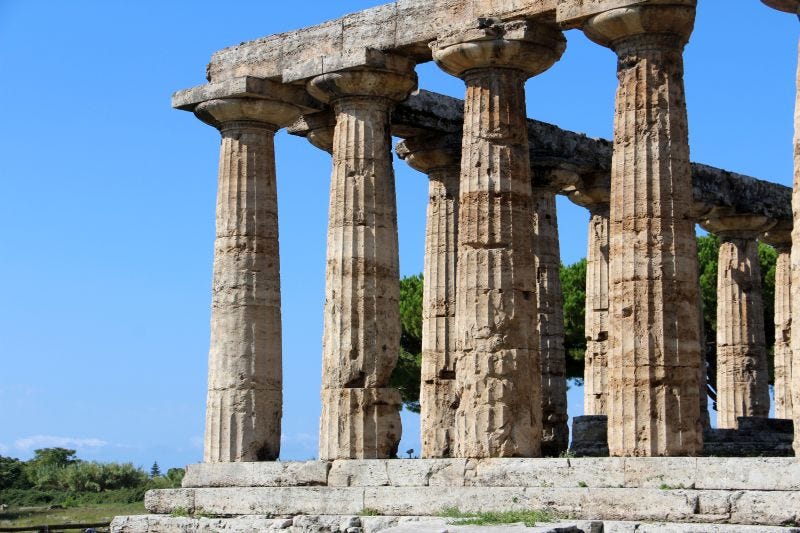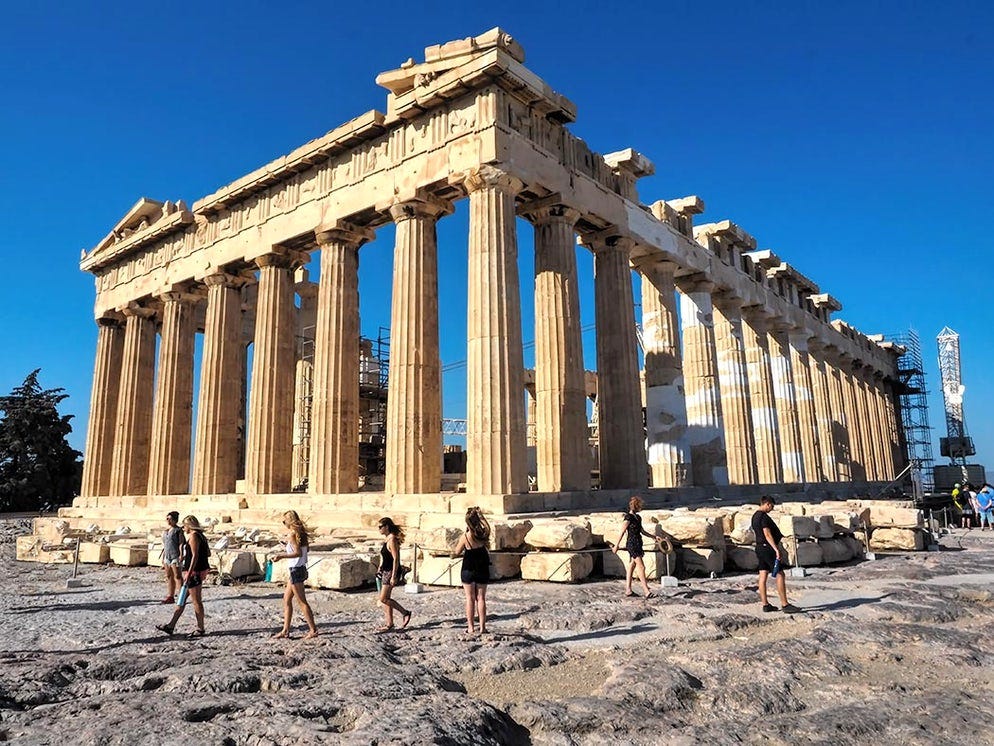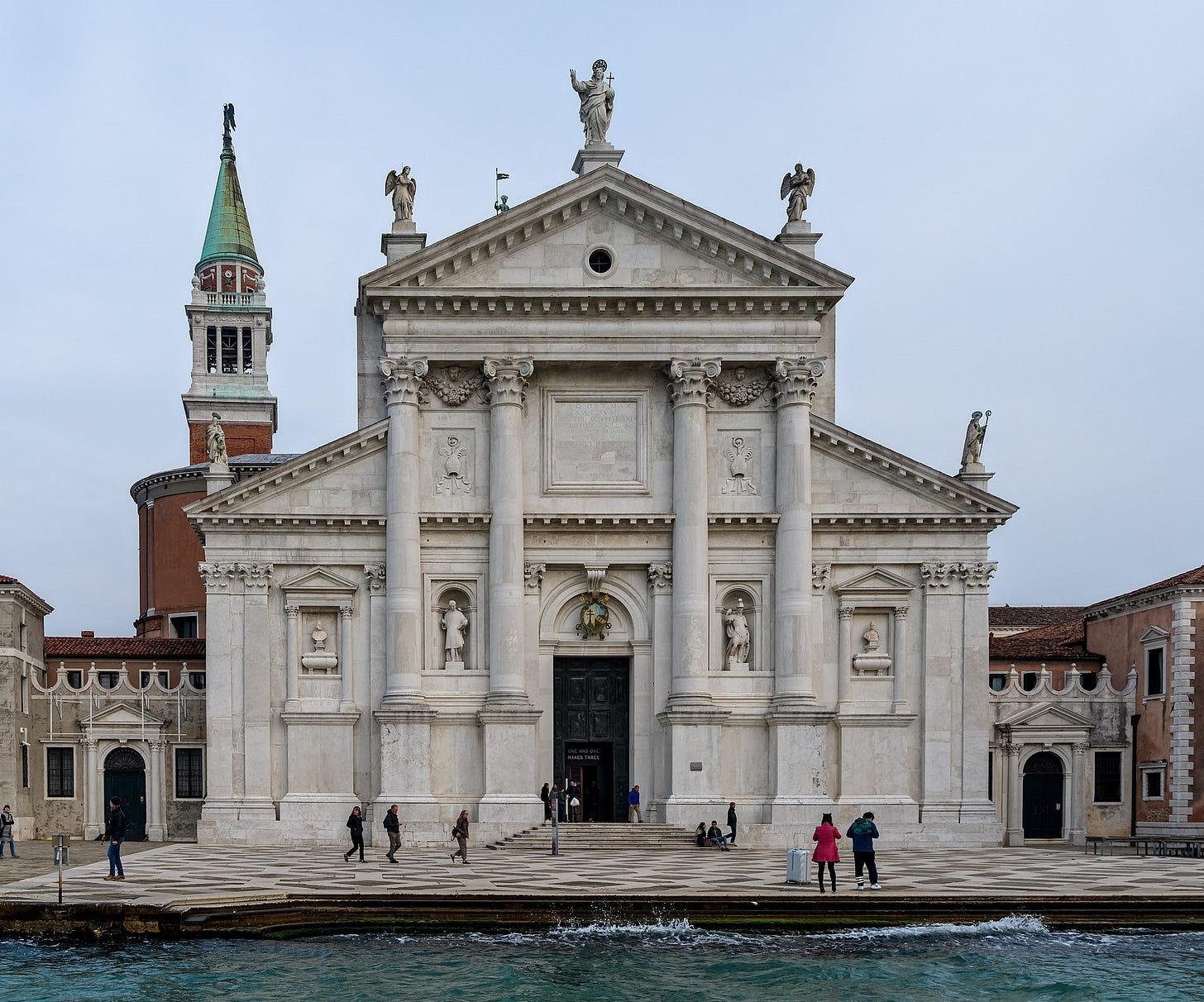Just as animals evolve through natural selection, architecture used to evolve through a similar process — until modernism broke the system. This evolution explains why old buildings are so beautiful and new ones often aren't.
How evolution works in nature
In nature, evolution works through natural selection. The theory of natural selection was developed independently by Charles Darwin and Alfred Russel Wallace in the mid-19th century. It's based on four observations:
Creatures have more offspring than can survive
Better traits help survival and reproduction — the fast gazelle escapes the lion and the strongest gorilla gets the most mates
Offspring vary — Individuals differ from each other with respect to traits that are important for survival and reproduction
Traits pass to children – These traits are partly heritable from one generation to the next
The result? Over time, species develop traits that are better suited to their environment. The poorly adapted die out; the well adapted thrive. This follows logically from the observations. If the observations are true, the theory of natural selection also is.
How architecture used to evolve
Until modernism, architecture evolved through a remarkably similar process that could be called "aesthetic selection."
For centuries, architects aimed for both practicality and beauty. They studied each other's work, experimented with variations, and published their best designs for others to copy. Here's how it worked:
Architects created variations such as new column designs, different proportions and novel ornaments. They experimented with new forms and variations, the best of which they also published for others to copy.
Some designs were more beautiful — they appealed more to human nature
More beautiful designs got copied more often — architects weren't trying to be unique; they copied what worked
Just like natural selection, this process refined architectural styles over centuries, creating styles perfectly adapted to human psychology. In the words of James Ward, historian:
‘It is rather to the inventive faculties of man, than to hints supplied by nature, that we must look for the origin and development of what is called style in architecture or ornament. In every case this is arrived at by a slow process, and by the extensive and persistent use of distinguishing features selected according to the needs and requirements of the time, to satisfy the prevailing tastes.’
(James Ward, Historic Ornament, 1897)
Through this process, ugly designs used to die out naturally. No one copied them. Architects who designed them got fewer commissions. Their styles went extinct. Beautiful buildings got copied endlessly. This is Darwinism for architecture.
Evidence of architectural evolution
Historical evidence shows this process at work:
Vitruvius (1st century AD) wrote detailed instructions for perfect proportions, spreading successful designs
Renaissance architects like Brunelleschi and Donatello travelled to Rome to measure and copy ancient buildings
Andrea Palladio published "The Four Books of Architecture" sharing his refined designs
Pattern books spread successful ornamental designs across Europe
As with species, multiple variants can exist side by side for a time. The variants that are better adapted to our aesthetic preferences become dominant as time passes. Architects experiment while copying the more beautiful designs and abandoning the less beautiful. Over time a style is improved through many small iterations, like rocks smoothened over the millennia by the flow of a river. The classical orders, for example, developed through this process of variation, copying and consequently refinement. Over time, conventions emerged and were documented. For thousands of years, these conventions have been followed by architects when designing detailed ornaments and exact proportions, allowing them to design great buildings without reinventing the wheel.
Many examples of ‘evolutionary steps’ can be found in the ruins of classical civilisation. Look at the columns in the pictures below. Each temple has slightly different proportions. Over time, certain proportions "won" because they looked better. The less appealing variations went "extinct," just like poorly adapted animals. In this example, each of the temples have a different variant of the Doric column, with different proportions. The variant in the first Temple of Hera in Paestum has by now gone extinct.
Figure 4.1. The Doric Temple of Concordia in Agrigento, Sicily, built around 440-430 BC.
Figure 4.2. The Doric columns of the first Temple of Hera in Paestum, Italy, built between 570 and 520 BC1. (De Jong 2010, 20-24; Gates 2011, 312-314.)
Figure 4.3. The Parthenon in Athens, Greece, built between 447-432 BC.
Why this process worked
This evolutionary process created increasingly beautiful buildings because of:
Trial and error — You can't know if a design works until it's built and experienced
Aesthetic selection — Buildings that didn't please people didn't get copied
Accumulation of improvements — Each generation built on the last's successes
The sophisticated solutions that evolved
Architectural evolution developed sophisticated solutions to visual problems:
Entasis
Columns aren't actually straight — they bulge slightly in the middle. Why? Perfectly straight columns look concave to our eyes. Ancient Greeks discovered this and evolved the solution: a subtle curve that makes columns look straight.
Corner adjustments
In his Ten Books on Architecture, Vitruvius noted: "Then, too, the columns at the corners should be made thicker than the others by a fiftieth of their own diameter, because they are sharply outlined by the unobstructed air round them, and seem to the beholder more slender than they are. Hence, we must counteract the ocular deception by an adjustment of proportions." When viewed against the bright sky, corner columns tend to appear thinner than they really are. To counteract this illusion, ancient Greek architects made the corner columns slightly thicker so they look equal in size to the others from a distance.
The Parthenon's refinements
Many of the most visually dominant lines in the Parthenon are subtly curved or tilted for optical reasons. The floor curves up; the columns lean inward and have entasis; the architrave and other horizontal lines are slightly curved. These tiny adjustments, discovered through centuries of evolution, were made to counteract optical illusions and enhance aesthetic harmony. Ancient Greek architects understood that straight lines can look distorted to the human eye from a distance.
The McMansion problem
"McMansions" in America show what happens when you try to copy classical styles without following evolved conventions. They use classical elements but ignore the refined proportions and rules that evolution developed.
The speed of evolution
Evolution accelerated with better communication — In ancient times, architects had to travel to study buildings. In the renaissance, pattern books spread designs regionally. In the industrial age, mass printing spread designs globally. Today, designs are shared instantly over the internet to anywhere on the globe.
Meanwhile, technical innovation and a general increase in prosperity enabled architects to explore previously unchartered waters. As a result, sophisticated new designs have emerged over the centuries, leading to the baroque and other styles, and outperforming the classical orders in their grandeur and aesthetic appeal. Faster communication should mean faster evolution toward beauty. But something went wrong...
Modernism
Since modernism, conventions have been abandoned, beauty is no longer a priority and architects aim for originality instead. When modernism declared that "ornament is crime" and made uniqueness more important than beauty, it broke the evolutionary process. Instead of selecting for beauty, architects now select for novelty. Instead of celebrating the copy of successes, critics demand originality.
The result? Architectural evolution stopped. We're building the aesthetic equivalent of evolutionary dead ends. Imagine if every chef insisted on inventing cooking from scratch, refusing to use any recipe that worked before. No bread, no pasta, no sauces — everything must be 'original.' How much room would that leave to make something tasting as good as dishes made with tried-and-tested recipes?
Figure 4.4. The Church of San Giorgio Maggiore, Venice, Italy. Designed by Andrea Palladio and built between 1566 and 1610.
A crucial insight
Here's something important: the more beautiful existing architecture becomes, the less room there is for improvement. The more innovations have been made, the less room for innovation there is left and the more reason there is to copy.
Architects and developers should take note of this, instead of striving for uniqueness and investing in Starchitecture. Think about it: after 2,500 years of evolution, Greek columns reached near-perfection. You can't improve them much. The smart move is to copy them exactly.
Nobody says that we should stop innovating. But when you've evolved something that works — like columns that look straight because they're actually slightly curved — why reinvent it? That's not creativity; it's waste.
Conclusion
Architectural beauty isn't created by individual genius. It evolves through collective trial and error over centuries. When architects:
Copy what works
Make small variations
Keep what's beautiful
Discard what isn't
...architecture automatically becomes more beautiful over time.
When they abandoned this process for modernism's "originality at all costs," they didn't free architecture from the conventions of the past — they killed its evolution.
What's next
Now we understand how architecture evolved toward beauty through aesthetic selection. Next, we'll discover the universal principles this evolution revealed — the rules that make buildings beautiful across all cultures and times.
Click here for the next article of this series.
De Jong 2010, 20-24; Gates 2011, 312-314





"The rejection of the conventions and details that have resulted from architectural evolution leads to disappointing designs, such as those of the countless ‘McMansions’ that have been built in the United States."
I don't see why this isn't part of architectural evolution. Whether or not we think they're ugly, the McMansion is demanded on the market. A lot of people think they look beautiful, which is why they build them. Why isn't this just part of the process?
"The more innovations have been made, the less room for innovation there is left and the more reason there is to copy." I'm also skeptical of this if we model architectural evolution as *combinatorial* (similar to technology) rather than like biological evolution.
Why wouldn't more innovation lead to *more* novel combinations and therefore more room for innovation?